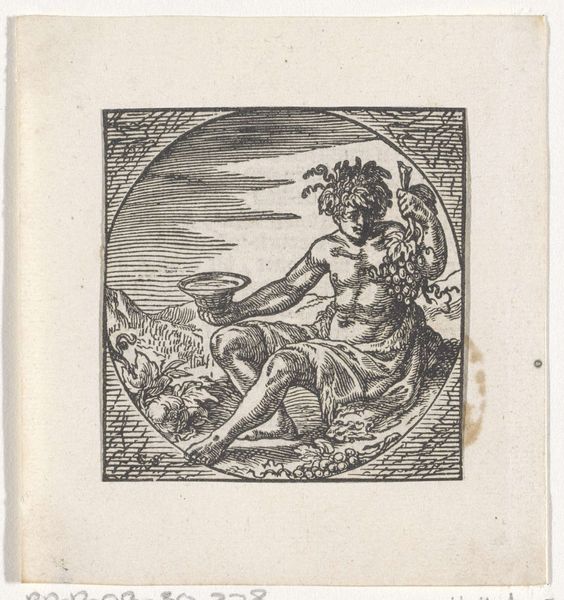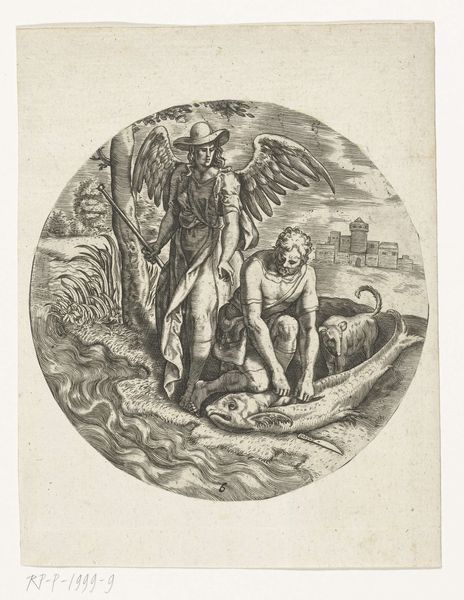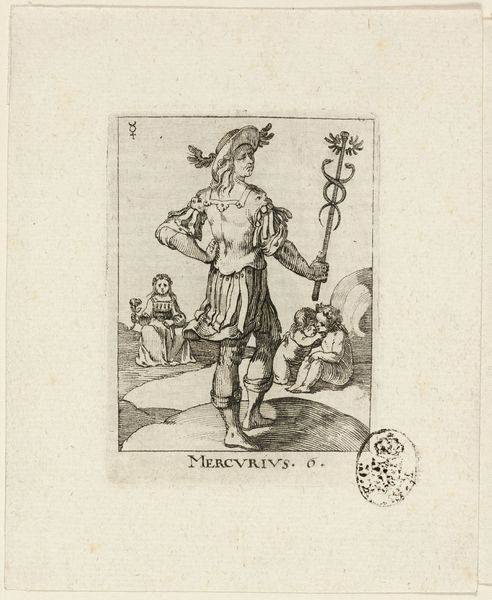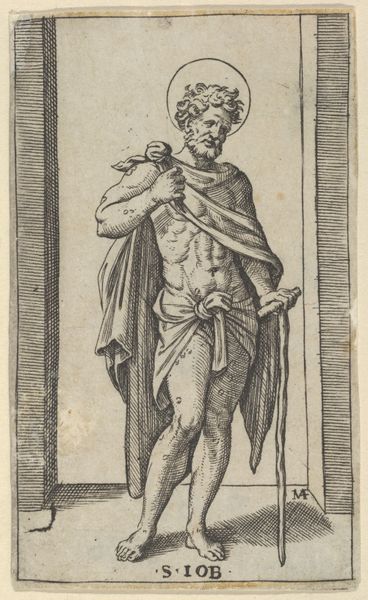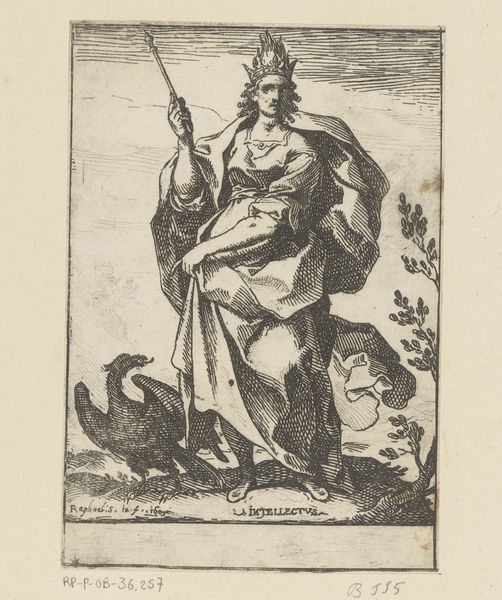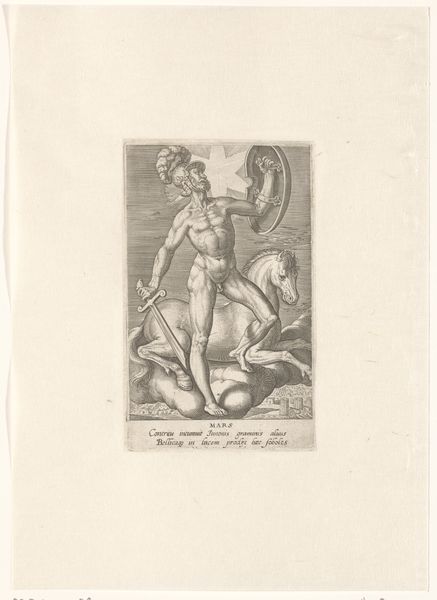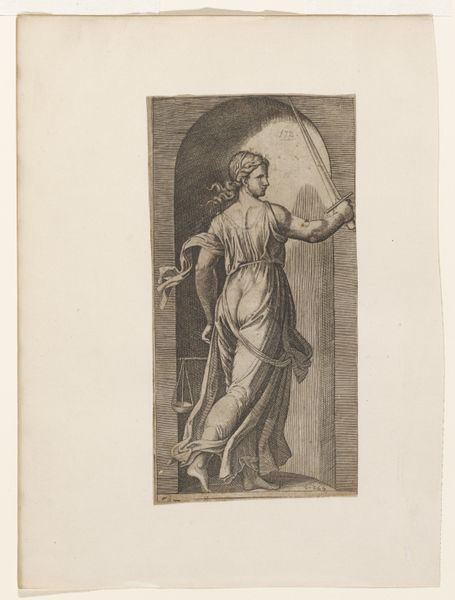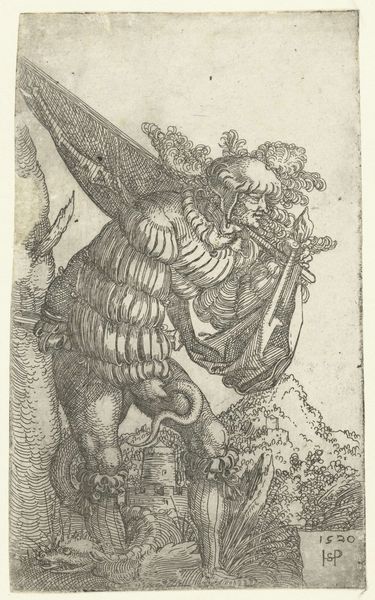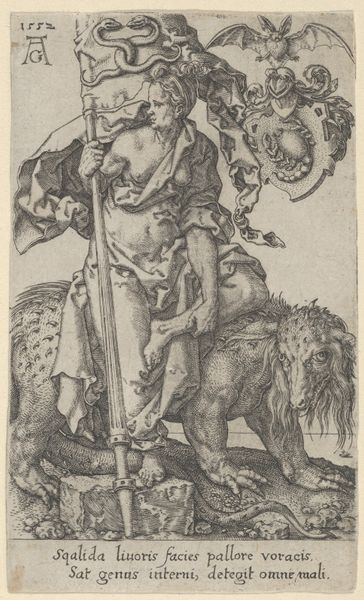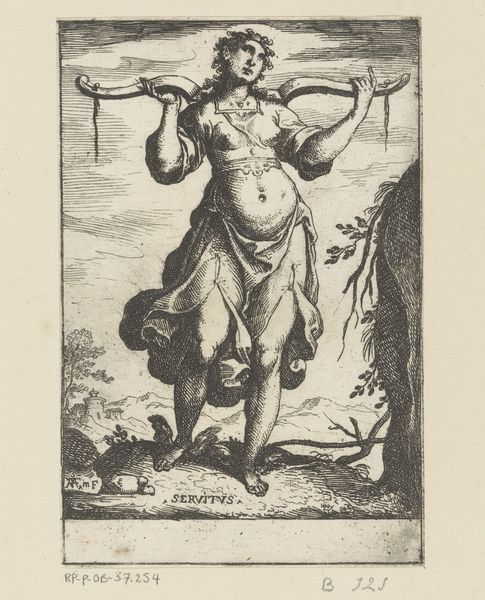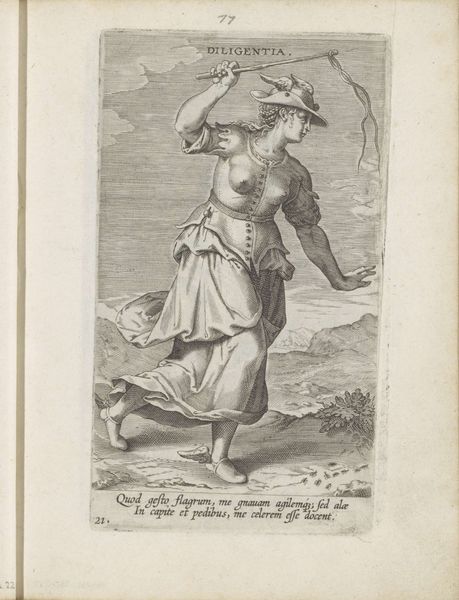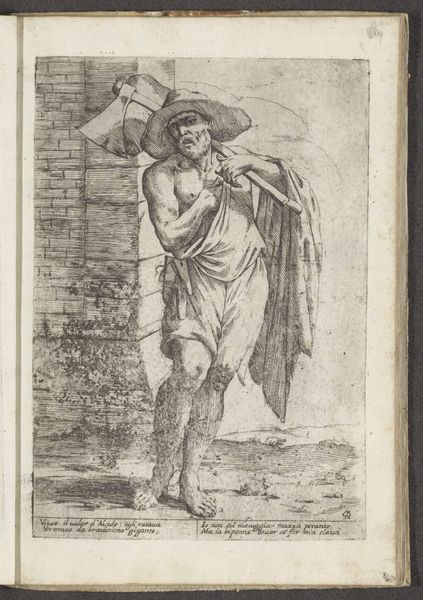
print, ink, engraving
# print
#
pen sketch
#
old engraving style
#
landscape
#
figuration
#
ink
#
line
#
history-painting
#
engraving
Dimensions: height 88 mm, width 81 mm
Copyright: Rijks Museum: Open Domain
Christoffel van Sichem the third made this print of Winter in the 17th century using woodcut. Woodcut is a relief printing process, where the artist carves away the areas they don't want to print, leaving the design raised on the block's surface. Sichem likely used knives and gouges to carefully remove wood from the block, following his drawn design. The remaining raised areas would then be inked and pressed onto paper, transferring the image. Look closely, and you can appreciate the crisp lines and bold contrasts achieved through this method. Each line is a testament to the artist's skill and control over the material, as it's unforgiving. Notice, too, how the texture of the wood itself subtly influences the final print. In Sichem's time, printmaking was vital for disseminating images and ideas. Woodcut, a relatively accessible technique, played a crucial role in this process, bringing art to a wider audience beyond the elite. The labor-intensive process contrasts with the relative ease of distribution, a reflection of the changing social landscape of the era. By appreciating the materiality and making of this print, we can move beyond traditional art history to consider its broader social and cultural significance.
Comments
No comments
Be the first to comment and join the conversation on the ultimate creative platform.
